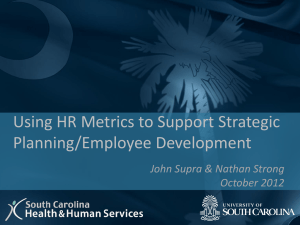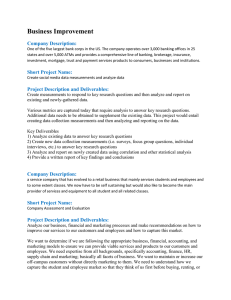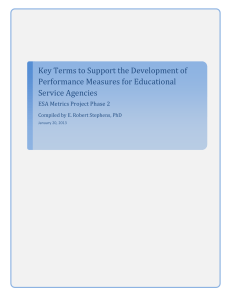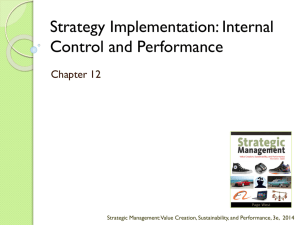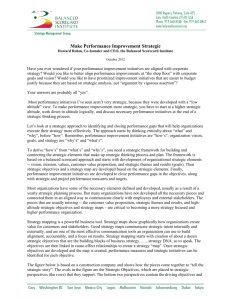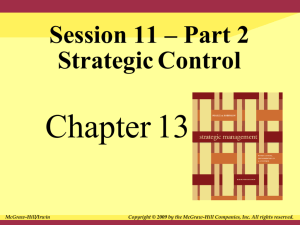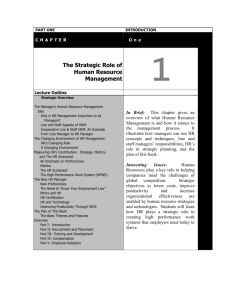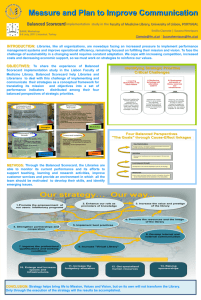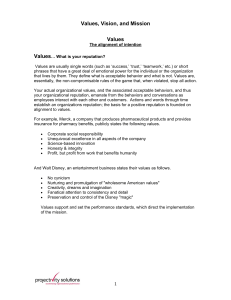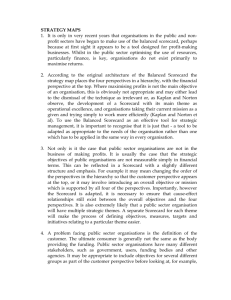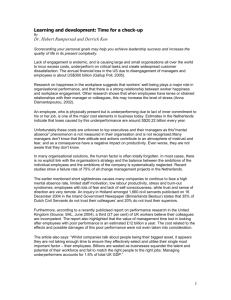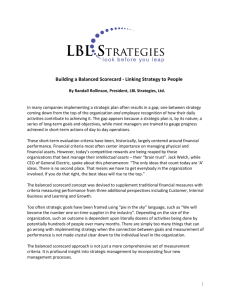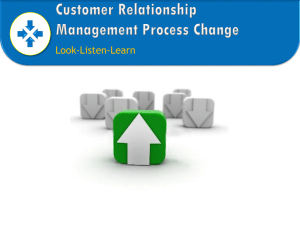The balanced scorecard
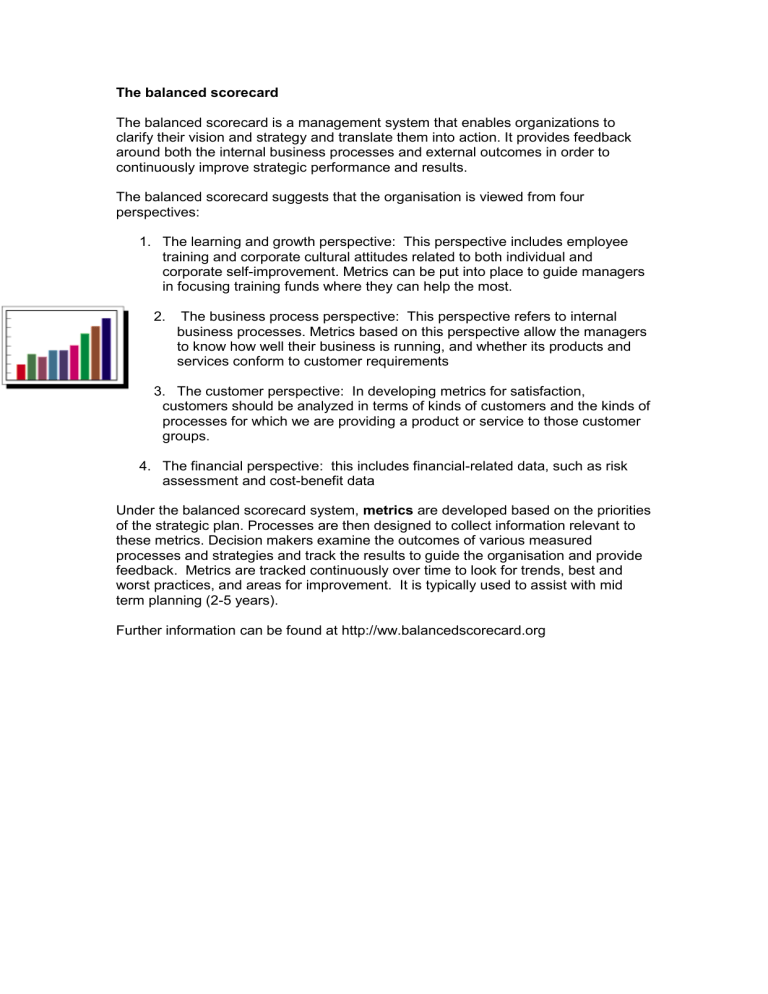
The balanced scorecard
The balanced scorecard is a management system that enables organizations to clarify their vision and strategy and translate them into action. It provides feedback around both the internal business processes and external outcomes in order to continuously improve strategic performance and results.
The balanced scorecard suggests that the organisation is viewed from four perspectives:
1. The learning and growth perspective: This perspective includes employee training and corporate cultural attitudes related to both individual and corporate self-improvement. Metrics can be put into place to guide managers in focusing training funds where they can help the most.
2. The business process perspective: This perspective refers to internal business processes. Metrics based on this perspective allow the managers to know how well their business is running, and whether its products and services conform to customer requirements
3. The customer perspective: In developing metrics for satisfaction, customers should be analyzed in terms of kinds of customers and the kinds of processes for which we are providing a product or service to those customer groups.
4. The financial perspective: this includes financial-related data, such as risk assessment and cost-benefit data
Under the balanced scorecard system, metrics are developed based on the priorities of the strategic plan. Processes are then designed to collect information relevant to these metrics. Decision makers examine the outcomes of various measured processes and strategies and track the results to guide the organisation and provide feedback. Metrics are tracked continuously over time to look for trends, best and worst practices, and areas for improvement. It is typically used to assist with mid term planning (2-5 years).
Further information can be found at http://ww.balancedscorecard.org


